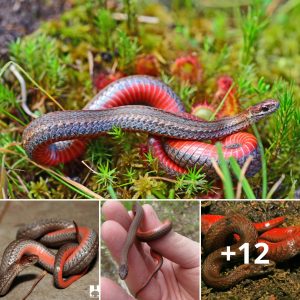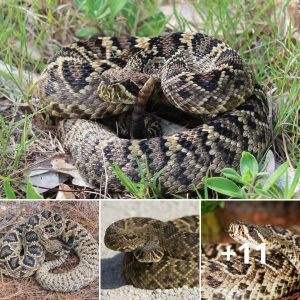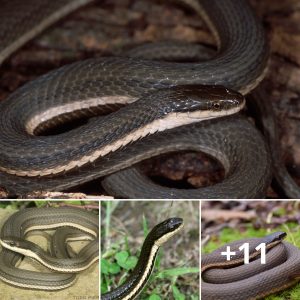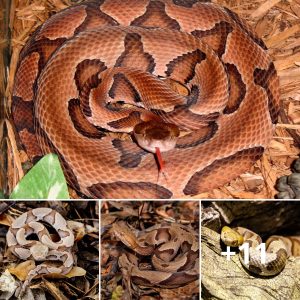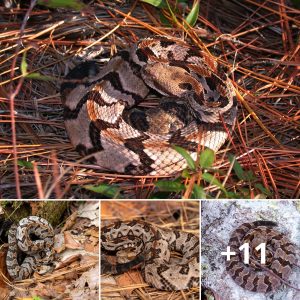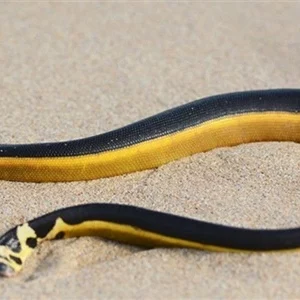Southern Hognose Snake: Master of Mimicry and Adaptation in Southern Landscapes
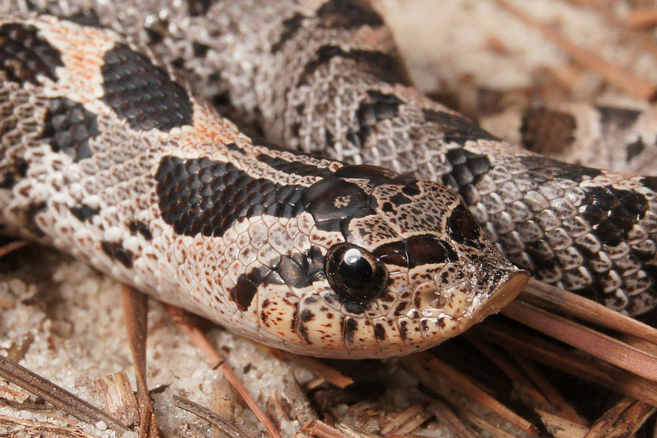
Heterodon simus
Description: The southern hognose snake has an upturned snout, like its larger cousin the eastern hognose snake. Southern hognose snakes are very stocky and have patterns of large, dark brown blotches on a tan or light gray background. Their bellies are whitish and usually mottled with gray or brown. The southern hognose has a dark stripe running between its eye and the corner of its mouth. Southern hognose snakes can be distinguished from eastern hognose snakes by the coloration under the tail, which is similar to that of their belly.
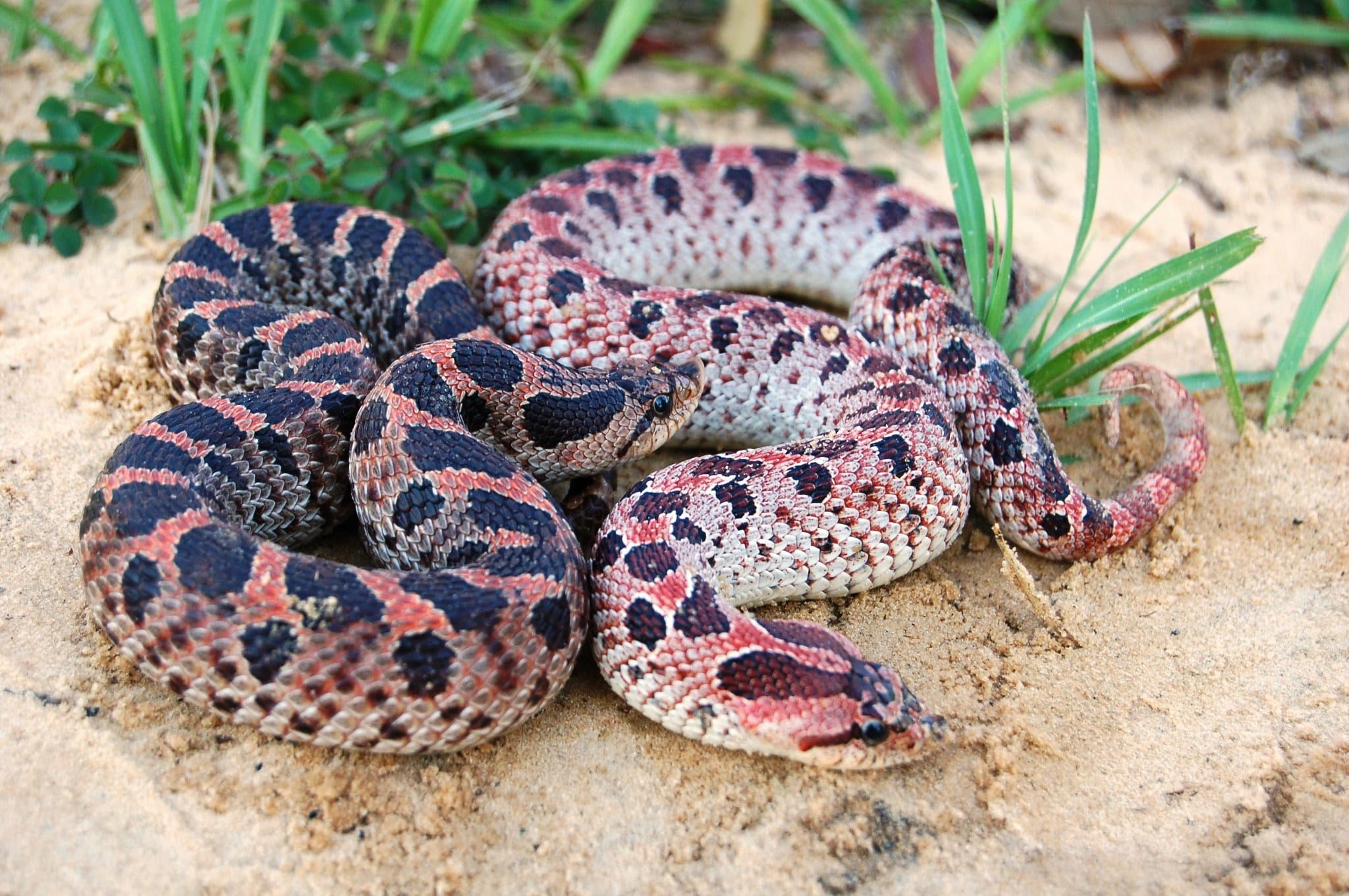
Feeding/Diet: Southern hognose snakes eat primarily toads and other amphibians.
Activity/Behavior: They are active primarily during the day.
Habitat/Range: These snakes are found in sandy fields and woods of the Coastal Plain and Sandhills region.
Reproduction: Southern hognose snakes lay 6–14 eggs during the summer, and the babies look like miniature versions of the adults.
Miscellaneous: When threatened, they usually behave similarly to eastern hognose snakes, but may be more reluctant to put on such a show. Their numbers have decreased significantly over most of this range, and they are protected in North Carolina.

Photo by RW Van Devender
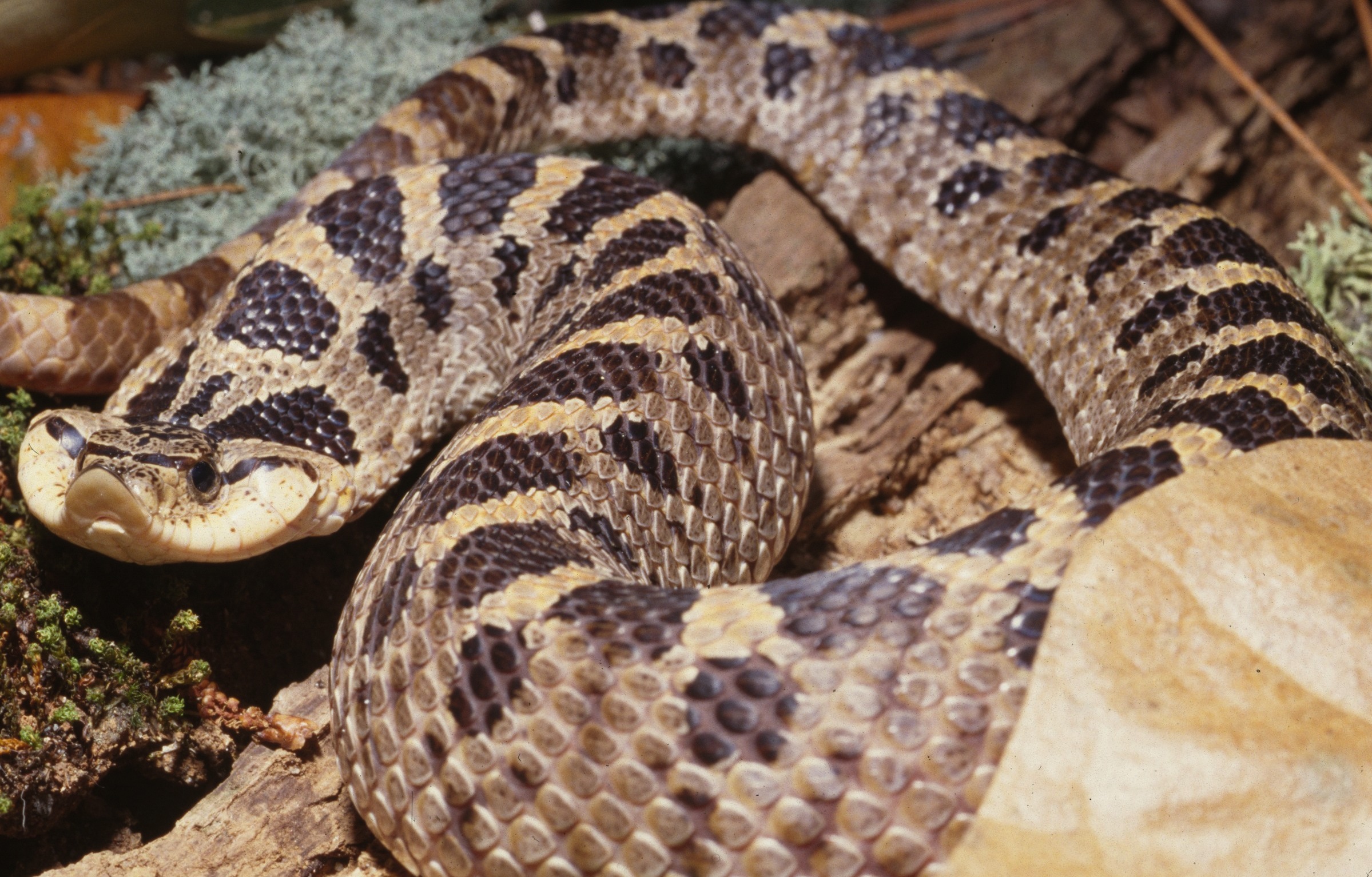
Photo by David E Scott
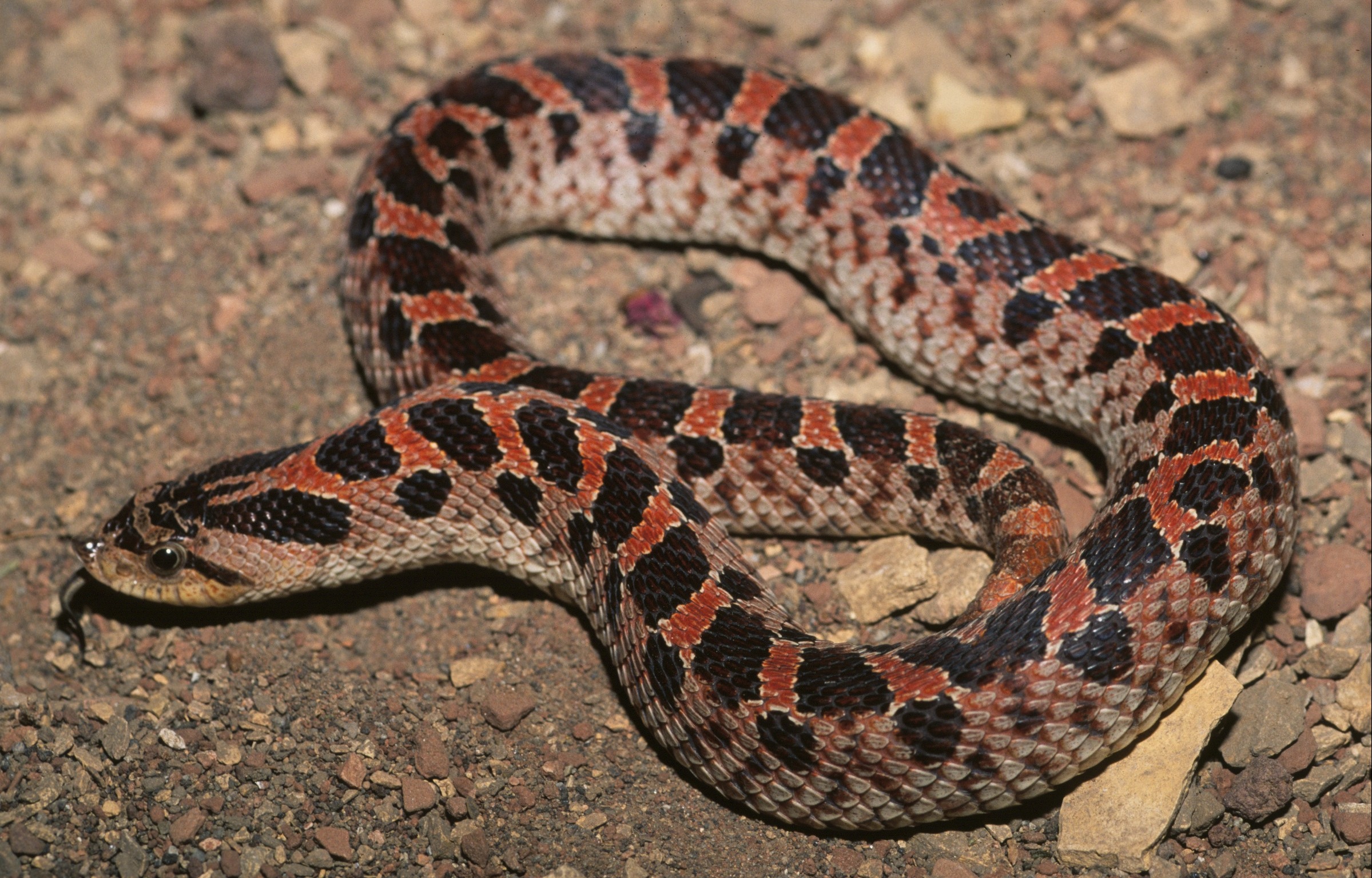

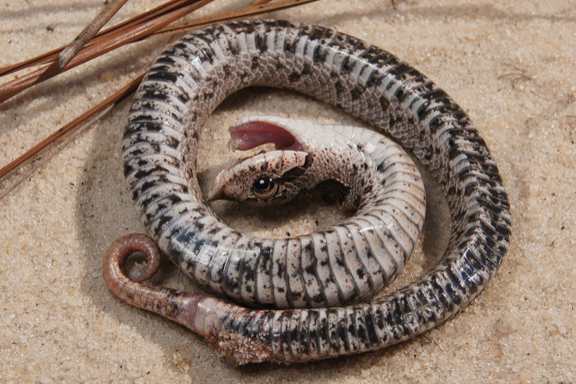
Photo by Ian Deery
